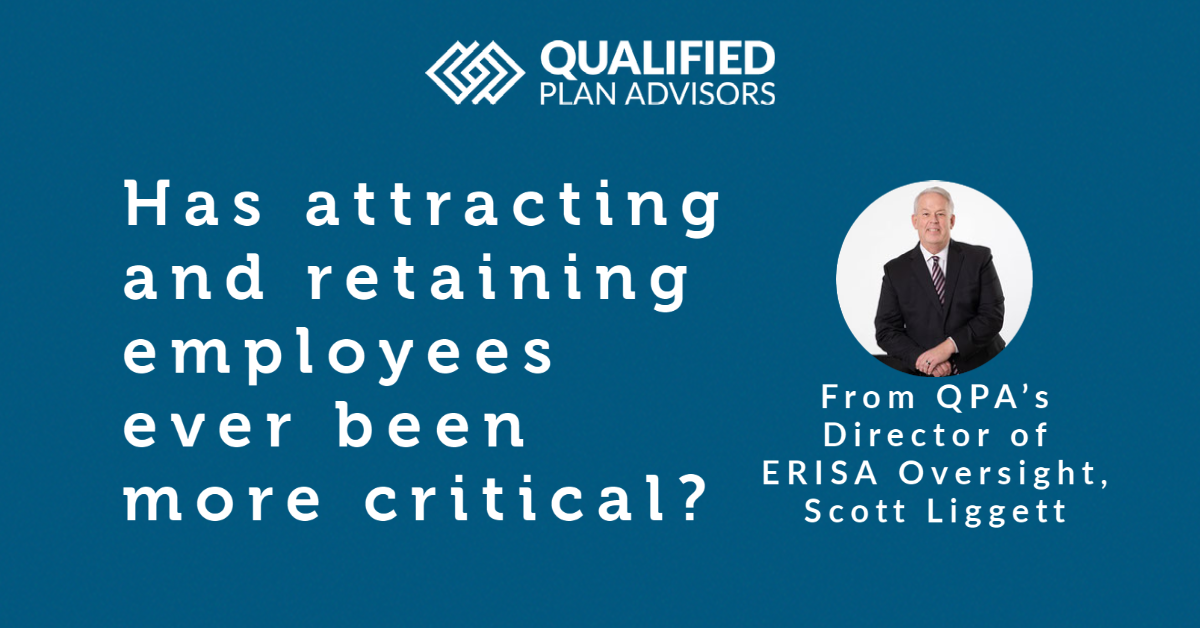Lessons from 401(k) Litigation During the Pandemic
In many ways, the world came to a halt when the COVID-19 pandemic hit. Retirement plan sponsors and fiduciaries should be aware that this certainly was not the case for plaintiffs’ firms. In the context of retirement plan litigation, in fact, they only picked up the pace.
After we saw roughly 50 class action retirement fee lawsuits filed in each of 2016, 2017, and 2018, that number fell off dramatically to around 20 in 2019. One might have expected that fall-off to continue during the pandemic. To the contrary, though, we saw nearly 100 suits filed in 2020 alone.
As always, we don’t consider fear to be the primary reason to pay attention to retirement plan fee litigation. Those plaintiffs’ complaints present opportunities for other plan sponsors and fiduciaries to understand trends and evolving expectations for reasonableness. Without regard to the ultimate outcome of the many (many) lawsuits initiated over the last several months, we can learn a lot of lessons by digging into the trends and allegations. During tomorrow’s Fiduciary 15 webinar, we’ll dive deeper into lawsuits fitting into three broad categories.
Revenue Sharing Is Still an Issue. It is a bit surprising to see that many plan sponsors – particularly those sponsoring larger plans – continue to rely on expensive investment options to generate revenue sharing that offsets plan expenses. Here is the basic pattern of allegations in those lawsuits:
1. Plan committee used more expensive versions of investment options when a cheaper version was available.
2. This resulted in excessive gross investment expenses.
3. Plan committee members have a fiduciary responsibility to seek cheaper versions (i.e., share class, CIT, and/or separate account) of any investment option made available.
4. They failed to meet that responsibility because they wanted to generate revenue sharing.
5. But they also failed to meet the responsibility to benchmark the recordkeeping expenses.
6. If they had benchmarked the recordkeeping expenses, they’d have discovered that the revenue sharing approach resulted in excessive recordkeeper fees.
7. Thus, even though a portion of the allegedly excessive investment fees were used to offset recordkeeping expenses, the total cost of the plan was unreasonable.
What do we learn from this? Committees should ensure that the plan is indeed using the cheapest or most efficient version of the investment options made available to participants. They also should be aware of the fee arrangement for the recordkeeper and monitor the total fees the recordkeeper receives.
There’s a Growing Target on Target Date Funds. The plaintiffs’ firms have really honed in on target date funds (TDFs). From a pure numbers perspective, this makes a lot of sense. With increasing frequency, plans have been using automatic enrollment and selecting TDFs as the plan’s default investment option. This means that a larger portion of plan assets are invested in TDFs, which in turn presents a more appealing prize for plaintiffs’ firms.
When plan fiduciaries establish TDFs as the default investment, they frequently rely on the Department of Labor’s safe harbor for a “Qualified Default Investment Alternative” or QDIA. That safe harbor treatment can provide a false sense of security, though, because plan fiduciaries end up paying less attention to the TDFs than to a plan’s core funds menu. The accelerating string of TDF lawsuits attack various aspects of plan’s TDFs:
* Expensive share class (with a cheaper share class or CIT version available)
* Proprietary fund usage (without supporting due diligence)
* Poor performance
* Using more expensive active TDFs instead of cheaper passive TDFs
What do we learn from this? Prudent fiduciaries will give more attention to their plan’s TDFs. It is time to ramp up the committee’s understanding of a plan’s particular TDFs, why they were chosen, and whether they remain the most reasonable option for the plan’s participants. If you’re a QPA client, please ask about our firm’s new “Target Date Deep Dive” capabilities, which will help you to take a closer look at your TDFs and to complete a checklist reflecting the DOL’s expectations.
Data Is at Greater Risk Than Ever Before. This probably doesn’t surprise anyone. We live through electronic data. Our retirement plan data is accessed electronically on a frequent basis and data is more frequently moving in electronic form with more remote workers.
The recent lawsuits target a couple of distinct data-related risks: (1) identity and account theft; and (2) recordkeepers using plan data to cross-sell. The DOL has provided a package of tips and best practices intended to help with the cybersecurity risks. That package will help plan fiduciaries and participants to manage those risks. Federal courts have not provided the same help with respect to cross-selling, however, as they’ve generally supported recordkeepers’ ability to use plan data for a variety of business purposes. This means that plan fiduciaries will have to become more diligent.
Closing Thoughts. There is a lot happening on the litigation front – far more than we can address in one short monthly newsletter. Our Fiduciary 15 webinar will provide you with more examples and best practices. Please take 15 minutes to join us and don’t hesitate to reach out if you have any additional questions.










